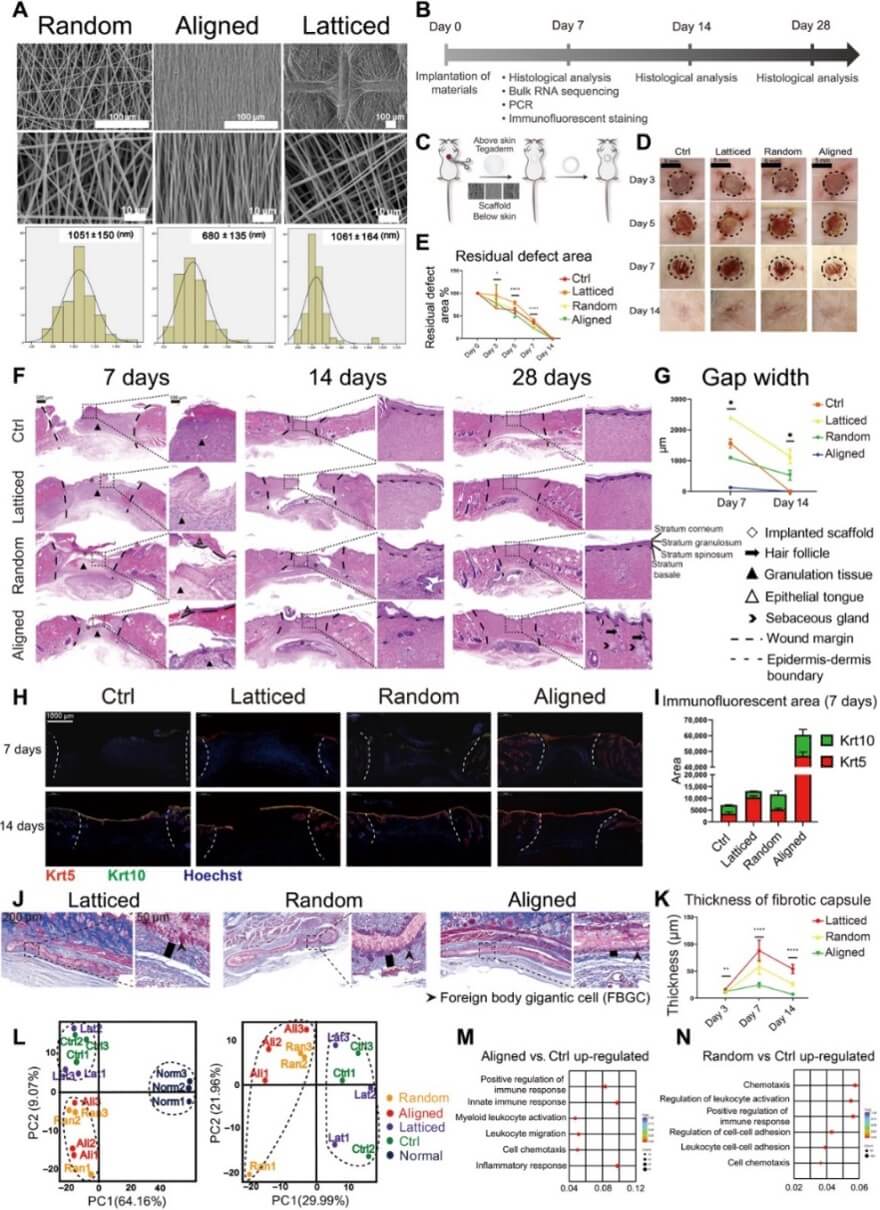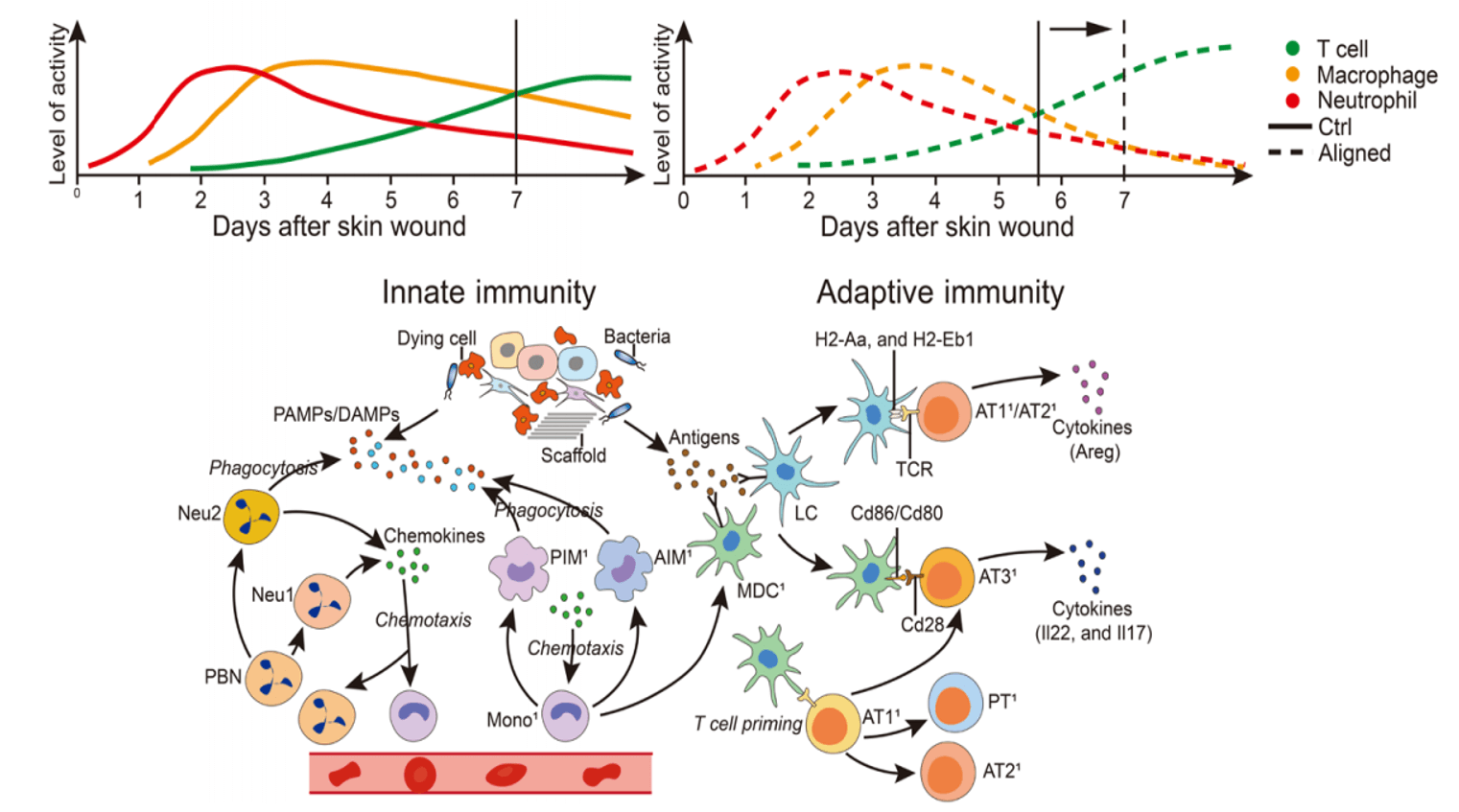

Researchers from West China School of Stomatology (WCSS), Sichuan University have conducted the first study deciphering the overall immune microenvironment around cutaneous scaffold using scRNA-seq, showing that the microenvironment around scaffolds involves an intricate interplay of immune and cutaneous cells.
Biomaterials and devices implanted in the body have a broad spectrum of clinical applications like tissue regeneration and cell transplantation. Previous studies had often focused on certain types of immune cells rather than an overview of different immune cells in the microenvironment upon implantation of a material, which will aid in the comprehensive understanding of the immune responses elicited by scaffolds.
Researchers developed poly(lactic-co-glycolic acid)–fish collagen (PLGA-FC) hybrid electrospun scaffolds with three types of surface topography (random group, latticed group and aligned group). They explored the regenerative outcomes of these scaffolds in rat/mouse dorsal skin excisional wounds and evaluated their immunomodulatory properties. The aligned group displayed an adaptive immunity–dominant response and yielded the most desirable results among three scaffolds. Integrated analysis of three scaffolds suggested that T cells had modulatory effects on wound healing.

Evaluation of the healing of rat skin wounds implanted with three types of electrospun scaffolds.

The aligned scaffold modulated the immune microenvironment and displayed an adaptive immunity–dominant response.
Their findings, published in the journal Science Advance on 26 May 2021, are potentially applicable in the design and selection of biomaterials for clinical use in wound repair, thereby improving patient outcomes.
The research team is led by Dr. Yi Man, the study’s corresponding author. Dr. Chen Hu, Dr. Chenyu Chu and Dr. Li Liu are the co-first authors.
For more details of this study, please click the link below.